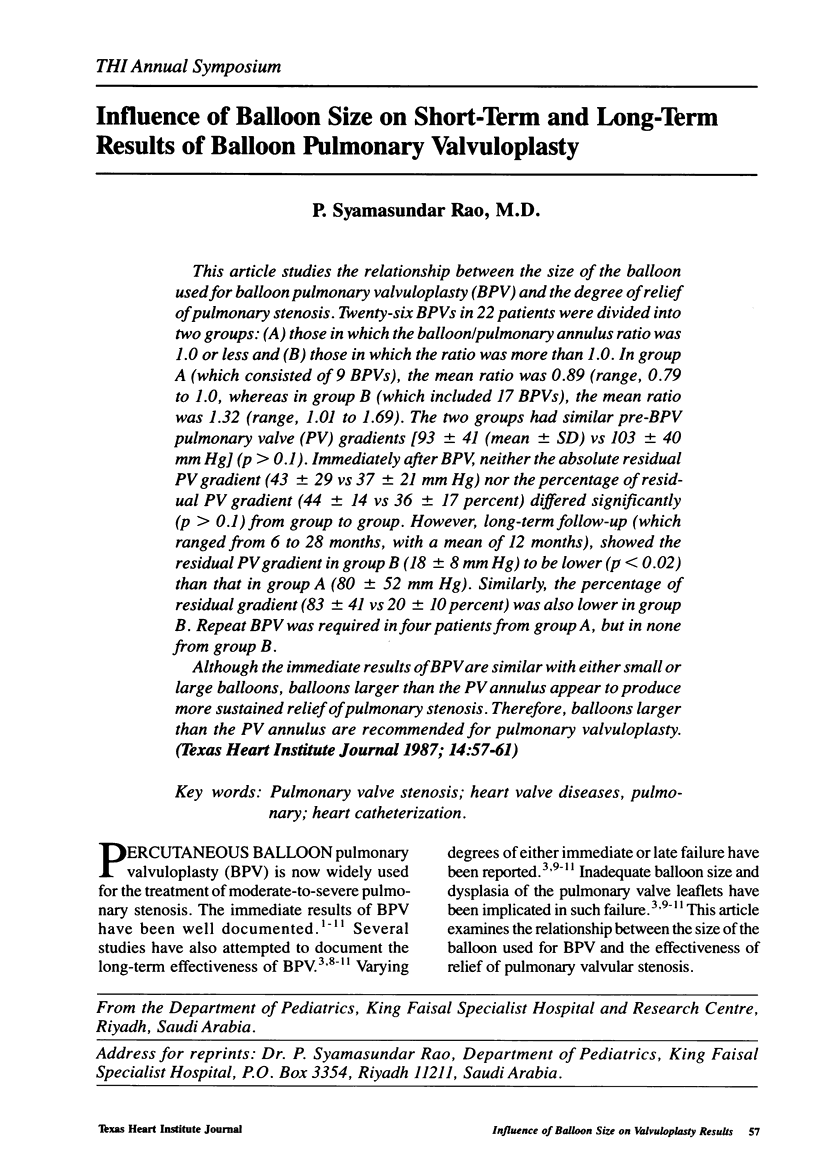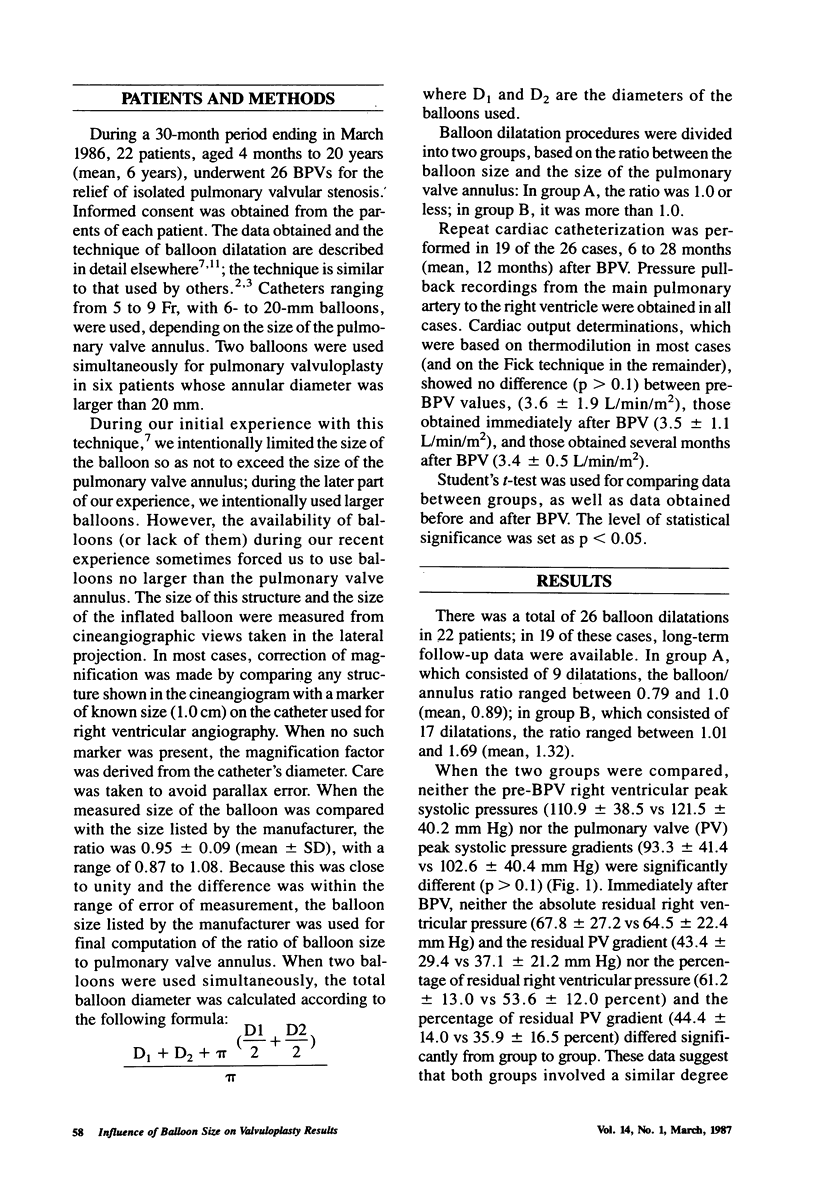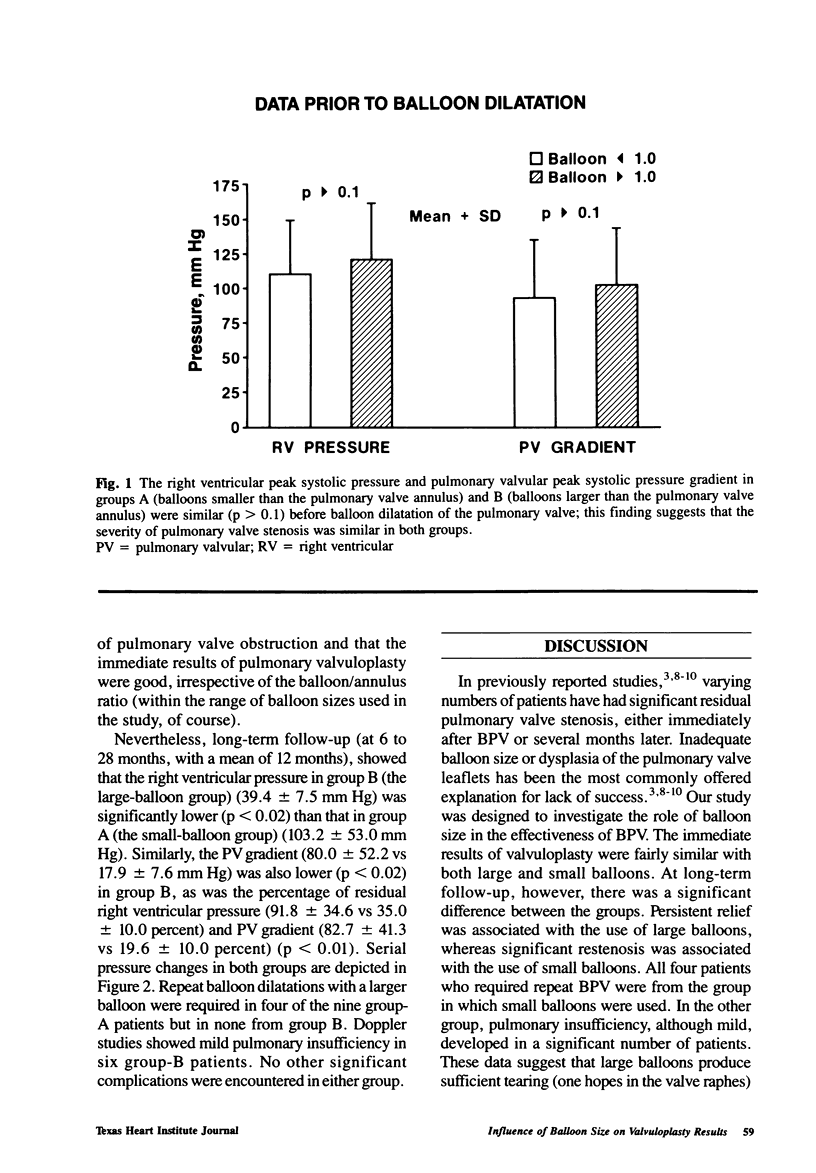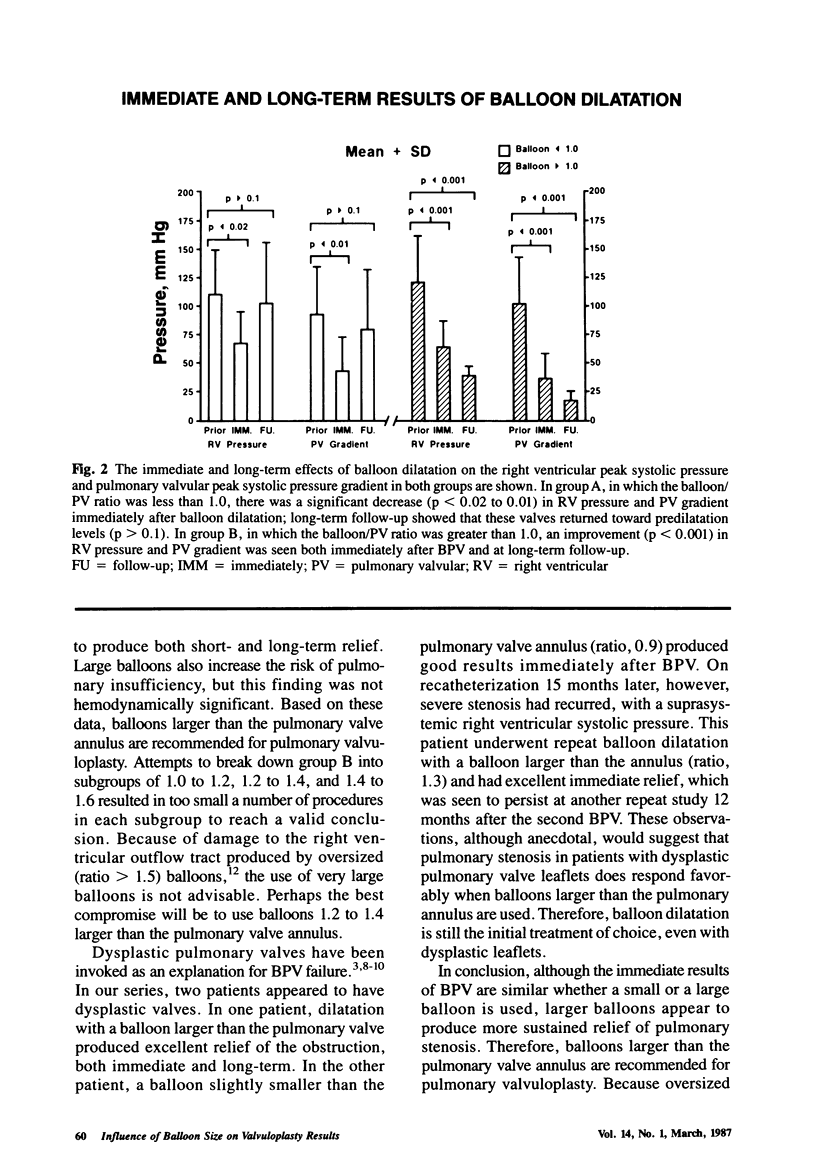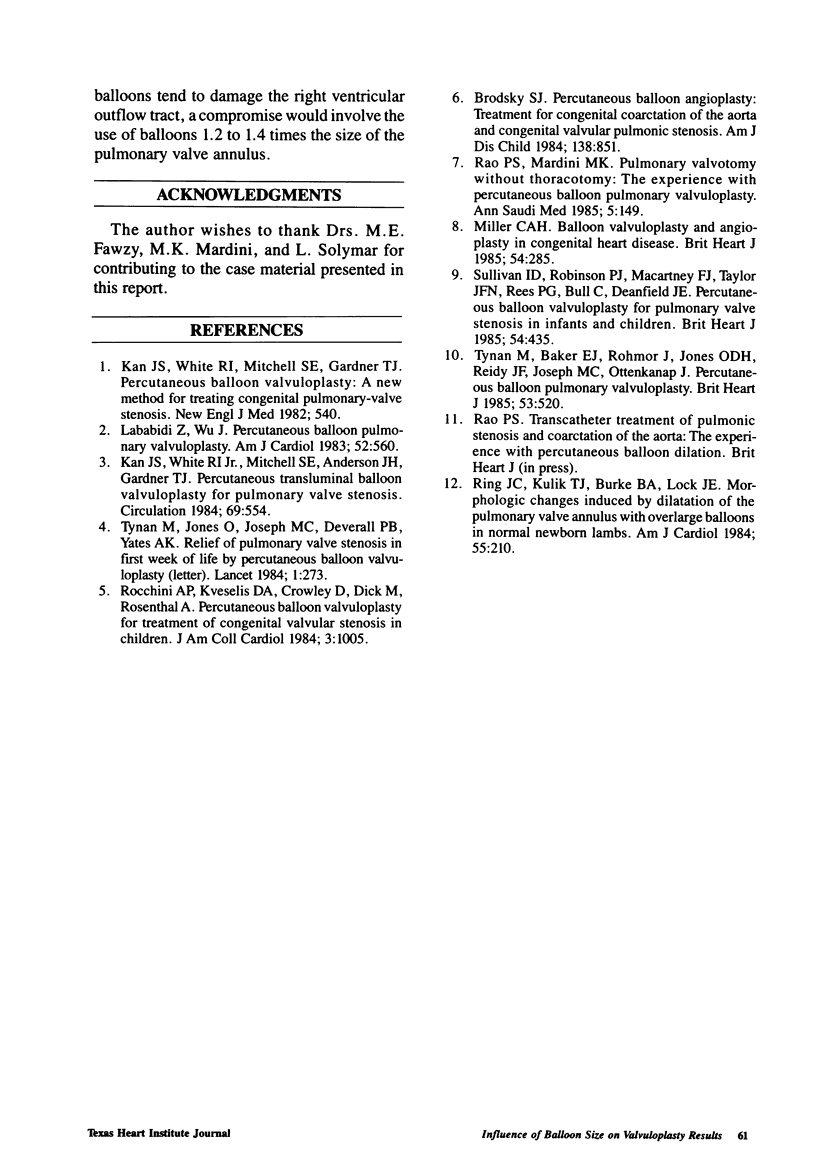Abstract
This article studies the relationship between the size of the balloon used for balloon pulmonary valvuloplasty (BPV) and the degree of relief of pulmonary stenosis. Twenty-six BPVs in 22 patients were divided into two groups: (A) those in which the balloon/pulmonary annulus ratio was 1.0 or less and (B) those in which the ratio was more than 1.0. In group A (which consisted of 9 BPVs), the mean ratio was 0.89 (range, 0.79 to 1.0, whereas in group B (which included 17 BPVs), the mean ratio was 1.32 (range, 1.01 to 1.69). The two groups had similar pre-BPV pulmonary valve (PV) gradients [93 ± 41 (mean ± SD) vs 103 ± 40 mm Hg] (p > 0.1). Immediately after BPV, neither the absolute residual PV gradient (43 ± 29 vs 37 ± 21 mm Hg) nor the percentage of residual PV gradient (44 ± 14 vs 36 ± 17 percent) differed significantly (p > 0.1) from group to group. However, long-term follow-up (which ranged from 6 to 28 months, with a mean of 12 months), showed the residual PV gradient in group B (18 ± 8 mm Hg) to be lower (p < 0.02) than that in group A (80 ± 52 mm Hg). Similarly, the percentage of residual gradient (83 ± 41 vs 20 ± 10 percent) was also lower in group B. Repeat BPV was required in four patients from group A, but in none from group B.
Although the immediate results of BPV are similar with either small or large balloons, balloons larger than the PV annulus appear to produce more sustained relief of pulmonary stenosis. Therefore, balloons larger than the PV annulus are recommended for pulmonary valvuloplasty. (Texas Heart Institute Journal 1987; 14:57-61)
Keywords: Pulmonary valve stenosis
Keywords: heart valve diseases, pulmonary
Keywords: heart catheterization
Full text
PDF